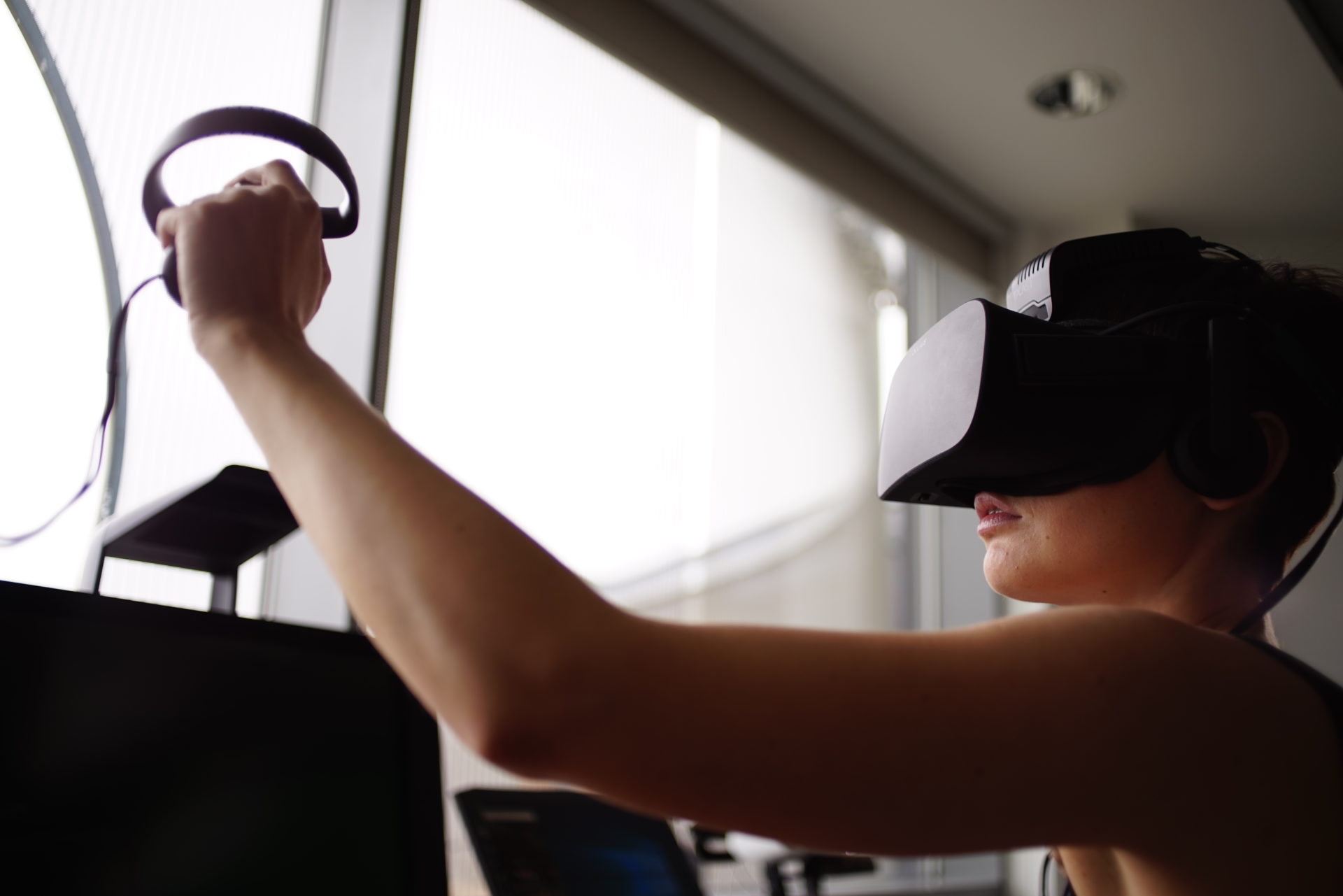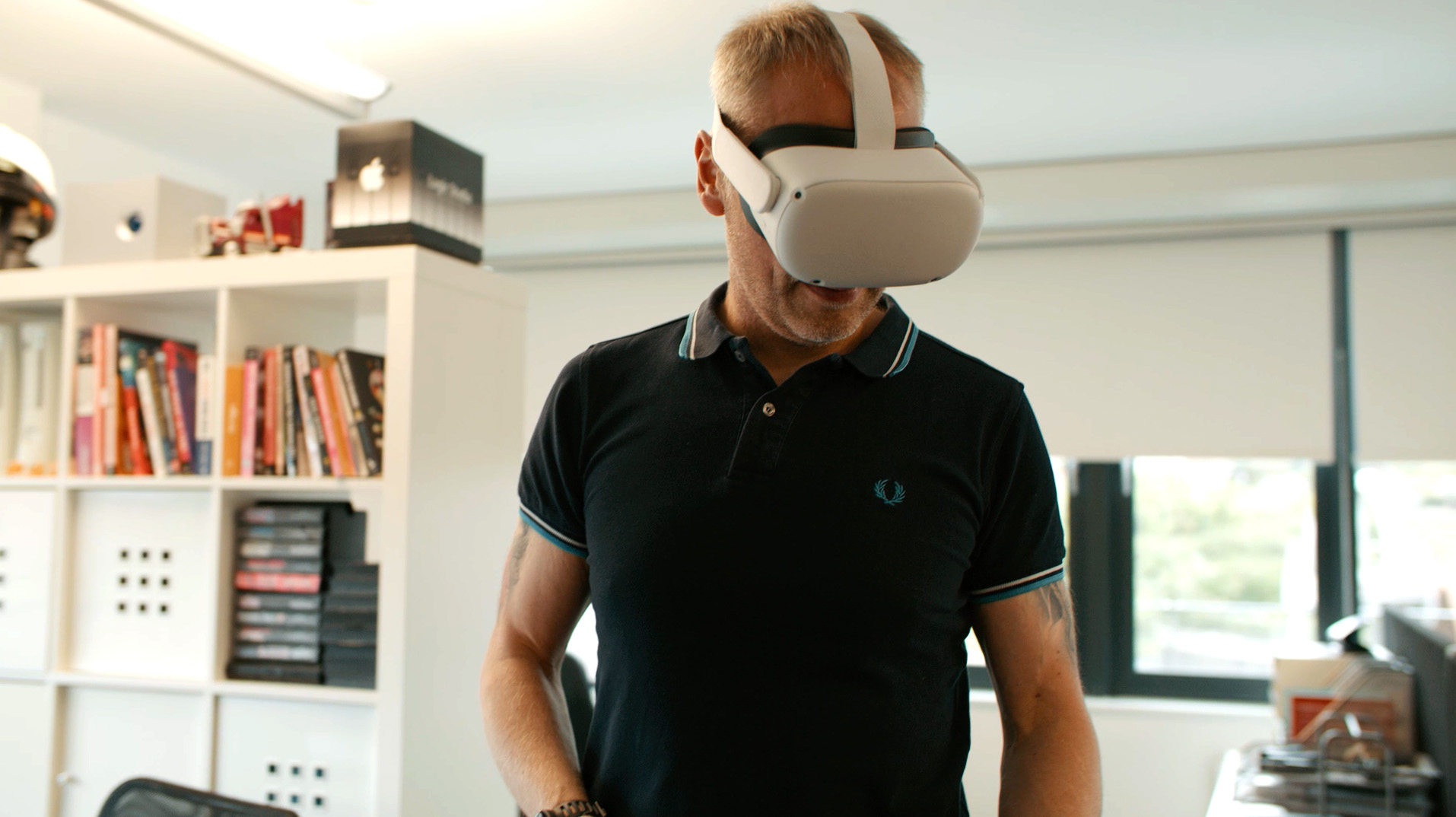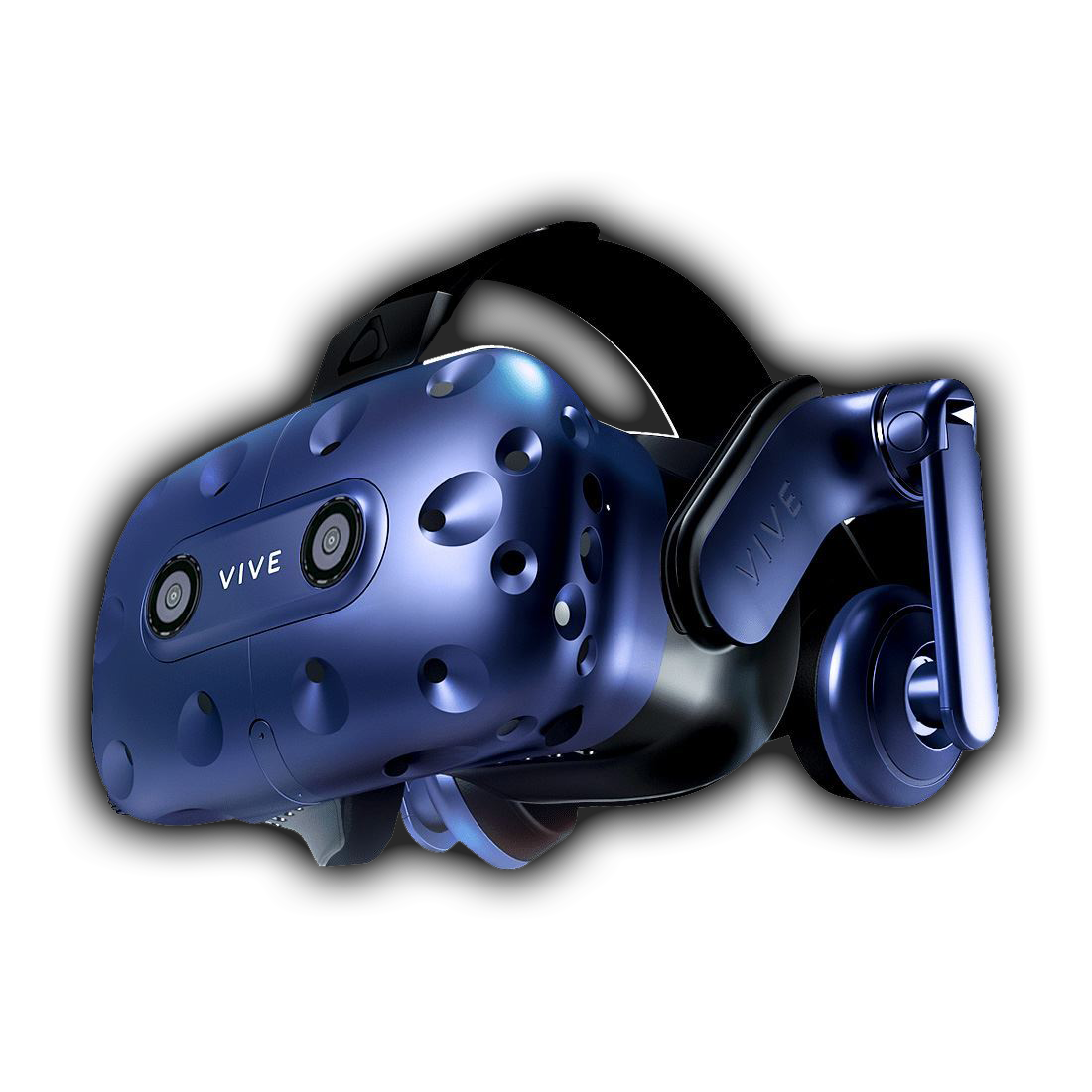

VR Training has a firm seat at the table in the world of learning and development, bringing a whole host of benefits to businesses and it’s popularity is still growing. The UK AR and VR sector is the fastest growing in Europe, with growth predicted to reach £62.5 billion by 2030. With uses extending far beyond entertainment purposes, businesses are taking advantage of VRs combination of innovation and practicality.
One of the ways that businesses are using VR is in providing virtual reality training to their employees. Thanks to the greater accessibility of the technology, businesses are now able to put their staff into a virtual environment for onboarding, learning and skills development.
In this guide, we’ll look at the many benefits of virtual reality training in the workplace, as well as some of the industries that have already started to reap the rewards of immersive training.

What is virtual reality training?
Virtual reality training is where your employees enter a virtual environment when wearing a VR headset so that they can interact and learn from the environment around them.
VR headsets block out environmental light and puts a stereoscopic display in front of each eye to ensure complete visual isolation.
Most headsets have various sensors built-in, such as an accelerometer or gyroscope, to track the movement of the user. The effect is completed with surround sound audio to create total immersion. Some headsets work with accessories, like controllers or haptic gloves, for added functionality.
Employees can access VR training content through a learning management system where they work through modules relevant to their job roles and is designed to teach employees a new skill or how to react to a specific situation. Users enter a virtual environment that mirrors their workplace — such as an oil rig, operating theatre or a factory— or a certain scenario they could experience on the job, like a fire safety or repairing a faulty on machinery.
The aim of this is to help the employee to learn through experience by seeing and doing, allowing them to develop essential skills without having to perform the task in reality, which of course offers a whole host of benefits.
What are the benefits of virtual reality training for employees?
There are many benefits of using virtual reality to train and upskill employees and it’s easy to see why the technology is becoming part and parcel of training, learning and development programmes for businesses. Let’s take a look at some of them.
1) There is much less risk involved in a virtual reality environment
Once of the main benefits of VR training in the workplace is that employees can experience tasks and scenarios that could be too risky to replicate in reality. These can be accurately reproduced within a controlled environment to help prepare your workers for the real thing.
Virtual reality training is perfect for highly technical tasks, such as medical surgery, engineering work as well as work in hazardous environments like working at heights or in confined spaces which are difficult to recreate accurately without posing a risk to the learner or those around them. VR training can also be used to place the learner in a particularly hazardous scenario that they may face as part of their job, like a fire evacuation or gas leak, to help reinforce the right course of action in an emergency.
The result? Increased confidence at work and a 43% reduction in workplace injury.
2) VR can be more cost effective than traditional training
Another of the major benefit of using VR training? It’s much more cost effective than traditional training methods. Though the size of budget you need for training can depend on a few factors, such as whether you do it in-house or if you need to hire out a specialist venue, generally speaking, virtual reality training can reduce how much you need to spend training in the long run.
Whilst there is an upfront cost for equipment and software, once you have VR training up and running, you can repeat it as many times as you like for however many employees require it and adapt content to changing industry requirements. The more popular VR becomes, the more prices of high-end headsets will be considered affordable.
There are also other financial benefits of using VR to deliver training. Because it’s more effective than traditional methods, there’s less need for re-training later, freeing up your staff schedule for greater productivity. Also, as VR training is delivered completely digitally, it’s possible to train employees at great distances, removing the need for unplanned downtime, and paying staff and instructors to go to an external location.
3) Realistic and bespoke scenarios can be created in VR
With the right tools and development resource, virtual training environments can be created to a very high level of detail so that they look and sound like the real thing. Cutting-edge graphics presented in ultra-high-definition with all-encompassing surround sound can be combined to create an engaging experience. Because of this, a real sense of immersion can be generated, which gives learners hands-on experience. The more life like the scenario, the more effective the training.
What’s more, bespoke virtual simulations can accurately replicate aspects of a business for a true-to-life training experience. This can be particularly useful if your company has a unique environment or set of processes that mean technical training is necessary. For example, you may use a one-of-a-kind piece of equipment that you wish to provide training on or you might have certain procedures that you’d like to demonstrate to new staff. With a bespoke simulation, you can train your employees more effectively so that they hit the ground running once they begin work.
4) VR can improve retention and recall
Outdated training material, delivered by video courses that doesn’t really relate to your job role… we’ve all been there. In fact, 90% of staff find traditional training ineffective. Onboarding and training is crucial for employee development and their ability to perform at work, so your training needs to have impact. VR training is transforming the way we learn.
Employees become immersed in a virtual environment where they learn through doing, helping to reinforce the skills and knowledge they are acquiring. As VR training can be repeated, they can easily practice their skills as much as they need to, aiding muscle memory and knowledge recall. As they say, practice makes perfect.
VR training in the workplace can also help your staff get to grips with complex theories and practices that they may need for the job. These concepts can be visualised in a much more digestible way than on paper, and the interactive element can give VR an edge over on-screen presentations.
The results don’t lie… retention rates when learning in VR were 75% compared to 5% for lectures and 10% for reading.
5) It’s effective for different types of learners
One of the most popular methods used to classify how we learn is the VARK modalities that suggest there are four types of learning: visual, aural, read/write, and kinesthetic. While no-one exclusively belongs to one group, each employee is likely to have their own preferred way of learning, which can make planning effective training for everyone difficult. However, by introducing VR, you can enhance your workplace training to suit everyone.
As we’ve mentioned, virtual reality training is highly visual and aural, while encouraging learning by doing. By backing up instructional methods that read/write learners prefer with virtual reality employee training, you can build a programme that will appeal to the other VARK modalities as well.
People who prefer visual and aural learning will be catered to, as will those who learn kinesthetically, because they’ll get to put the skills they are gaining into practice to see how things work. It’s a win, win for all.
6) Training can be done remotely
VR training opens up a whole new world for remote learning and collaboration, which is ideal for businesses where employees need to train in specific and sometimes inaccessible environments as well as if employees are dispersed globally.
Training programmes can be accessed or downloaded remotely, so a workforce can receive the same interactive training even if they are spread across multiple locations. With quality VR headsets becoming cheaper and more available, this method can often prove much more cost effective than getting everyone to the same place and delivering hands-on training. Your staff will be able to have the same experience without the need to travel.
If you have a large business that is spread over multiple locations or a significant number of remote workers, delivering your training through VR is a great option to ensure that everyone receives the same instruction at a high standard. In doing so, you can guarantee that your workforce is on the same page.
7) The VR user experience is engaging and enjoyable
Lack of career development is the number one reason why employees left their jobs between April 2021 and April 2022, ranking above uninspiring leaders and inadequate compensation. But, ensuring your staff engage with the training they’re giving isn’t always easy — fortunately, virtual reality can help with that.
In a world where we’re used to sitting through slideshow presentations, introducing VR training in the workplace can offer an alternative that generates excitement and interest, as well as improve engagement and enjoyment. Through VR training, topics can be presented in different ways, allowing for greater variety, while instructional segments can be easily broken up with immersive activities to keep brains in gear.
VR training is also a great stimulus for discussion, which is great news if you’re trying to increase collaboration and morale among your staff. It’s easy to add an element of fun too, which can get everyone on the same page and feeling good about training when used in healthy doses.
8) It’s useful for attracting the best candidates
When it comes to recruitment, every firm wants to have their pick of the very best candidates. But, to reach that point, you need to be able to show you’re the kind of business a promising jobseeker will choose over others, otherwise you’ll have to settle for second best.
Skills development and investing in the latest technology are key to attracting and retaining top talent in todays job market. 60% of employees have said they want to see VR headsets introduced to their workforce by 2024. Now is the perfect time to start exploring the role XR can play in your business.
Adopting VR training for your staff is a great way to show you’re forward-thinking and willing to invest in your employees’ development, which makes it a nice plus point when it comes to recruiting the best candidates.
9) Training can be tracked to evaluate the effectiveness of VR
Data is playing an increasingly important role in the workplace as businesses try to measure how well they’re doing to determine whether their actions are having the desired effect.
Staff performance is one aspect that comes under regular focus, with targets and key performance indicators playing a key role. However, with traditional training programmes, it can be difficult to quantify how staff are getting on and whether the content is proving useful — this often comes down to an employee survey, which isn’t the most accurate method.
Virtual reality training is completely trackable. With access to data and analytics from features like head tracking and heat mapping, you can get granular, precise results about your employees’ performance during training.
For example, with health and safety training for an emergency scenario, you will be able to see how an individual’s performance improves as they become more familiar with the correct procedure and how they need to act. Because data is collected in real-time and the scenario can be played back, an instructor will be able to provide immediate feedback for the employee and give them advice on how to improve.
Over time, you will also be able to collate the results from your entire workforce to judge whether the virtual reality training is proving to be effective. With access to this, you can look at the bigger picture and make data-led decisions on how the programme should be modified and what areas your workforce need further training in.
Where is VR training for the workplace already being used?
Now that we’ve had an in-depth look at the benefits of virtual reality training, let’s have a look at a few examples of industries where the technology is already being used to revolutionise how the workforce develops its knowledge and skills.
Offshore drilling
In the offshore drilling industry, which sees an average of 415 non-fatal injuries per 100,000 workers (Oil & Gas UK), virtual reality training is helping to improve health and safety. One of the most effective ways that this is happening is through the use of technical training simulations that can replicate experiences at sea and provide instruction when using specialist machinery, both of which are difficult to replicate in regular training.
Previously, it was only possible to train staff on the job or at great expense on shore, but VR technology now allows workers to get hands-on practice at a reduced cost and in a much safer environment. Combine this with the fact that both new hires and returning staff can approach their time offshore having trained with the latest machinery and emergency procedures, and it’s easy to see why VR oil and gas training is improving health and safety.
Construction
In the UK, the construction sector is one of the riskiest to work in, with a non-fatal injury rate of 2,940 for every 100,000 workers, according to the latest figures from the HSE. From heavy machinery accidents to falls from height, there are many hazards to plan and train for when on the job, so it’s understandable that employers want to provide the most comprehensive training possible. Thankfully, VR construction training is helping to make construction workers more competent.
Virtual reality training can cover a lot of bases in the construction sector. Whether the required training is for health and safety procedure, such as hazard perception or handling dangerous materials, or technical training for equipment training and maintenance, VR construction training allows staff to improve their skills with total immersion and without any risk, so they’re ready to keep a higher standard of safety on-site.
Aerospace
When it comes to precision engineering, there aren’t many sectors that demand work with pin-point accuracy quite like aerospace and aviation. To work in a technical role in this industry, you need to have a comprehensive knowledge of all the parts, equipment, and procedures required to create and maintain the complex machinery that goes into building aircrafts. To gain these necessary skills takes years of study and practice, but the learning process can now be enhanced with VR aviation training.
In virtual reality, a technical procedure can be accurately portrayed so staff can learn by doing, and traditional instruction is reinforced. For aerospace professionals, a simulation like this also allows the procedure to be repeated as many times as they like, something that would simply not be possible in reality due to costs and time constraints. Virtual reality training for aerospace promises to enhance the training of engineers so that they can work with a higher level of competence.
A good example of VR training for aerospace in action can be found in our work with Lionbridge on a VR technical procedure for engine maintenance. In this simulation, the user can learn exactly how to remove a faulty unit from the side of the engine by performing the task and receiving instruction at the same time. The training is a great way for learners to get regular practice in something that would not usually be possible.
Healthcare
In the healthcare sector, medical professionals are training to work in potentially life or death situations a lot of the time. However, the chance to gain practical, hands-on experience working with the human body can be rare or expensive, so many institutions are turning to VR to provide realistic medical training for staff. In these simulations, the user can hone their skills and get an insight into complex medical procedures in a safe space for learning.
Additionally, VR training programmes have been created for empathy training, where students learn how to break bad news to loved ones, so they are mentally prepared for such sensitive situations. The medium is also providing opportunities for medical students to learn about the human anatomy in a highly visual way, increasing their knowledge and understanding.
The verdict? VR training isn’t going anywhere…
With so many incredible benefits and the impact virtual reality training has on so many aspects and areas of business, it’s no wonder brands are prioritising VR training.
Are you interested in learning more about these benefits and exploring how VR can work for your business? Chat to one of our experts.
If you want to get stuck in and try our VR content you can buy our off the shelf Hazard Recognition and Safety Skills modules and start practising in VR right away! Or get